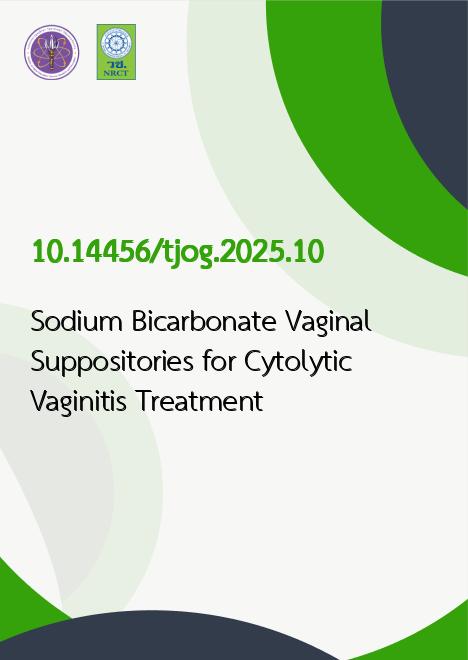
|
Sodium Bicarbonate Vaginal Suppositories for Cytolytic Vaginitis Treatment |
|---|---|
| รหัสดีโอไอ | |
| Creator | Chenchit Chayachinda |
| Title | Sodium Bicarbonate Vaginal Suppositories for Cytolytic Vaginitis Treatment |
| Contributor | Kittipoom Chinhiran, Piyorot Preecha |
| Publisher | PIMDEE Co., Ltd. |
| Publication Year | 2568 |
| Journal Title | Thai Journal of Obstetrics and Gynaecology |
| Journal Vol. | 33 |
| Journal No. | 2 |
| Page no. | 89-94 |
| Keyword | cytolytic vaginitis, cytolytic vaginosis, sodium bicarbonate, treatment, suppository |
| URL Website | https://tci-thaijo.org/index.php/tjog/index |
| Website title | www.tci-thaijo.org |
| ISSN | 2673-0871 |
| Abstract | Cytolytic vaginitis (CV) is a form of vaginal dysbiosis resulting from an overgrowth of Lactobacilli, which are the primary protective bacteria in the vagina. The symptoms closely resemble those of fungal vaginitis, including abnormal vaginal discharge, itching, dysuria, and dyspareunia. There is no accurate diagnostic method, but bed-side diagnosis requires microscopic examination and pH testing. The Royal Thai College of Obstetricians and Gynaecologists outlines the following diagnostic guidelines: vaginal acidity (pH < 4.5), absence of vaginal fungal hyphae, and a higher number of white blood cells than squamous epithelial cells. In contrast, cytolytic vaginosis is defined by a high concentration of Lactobacilli with predominant epithelial cells with cytolysis. Patients with either condition often experience similar symptoms and may have a history of various unsuccessful treatments. The recommended treatment includes vaginal douching with a sodium carbonate solution or the use of sodium bicarbonate suppositories. The vaginal douching can be difficult to follow, particularly for Thai women. The Unit of Infectious Diseases, Department of Obstetrics and Gynaecology, Faculty of Medicine Siriraj Hospital, has used 300 mg sodium bicarbonate tablets (Sodamint?) as vaginal suppositories to treat this condition. This article aims to demonstrate our treatment experience, potentially contributing to the development of further knowledge and research. |
